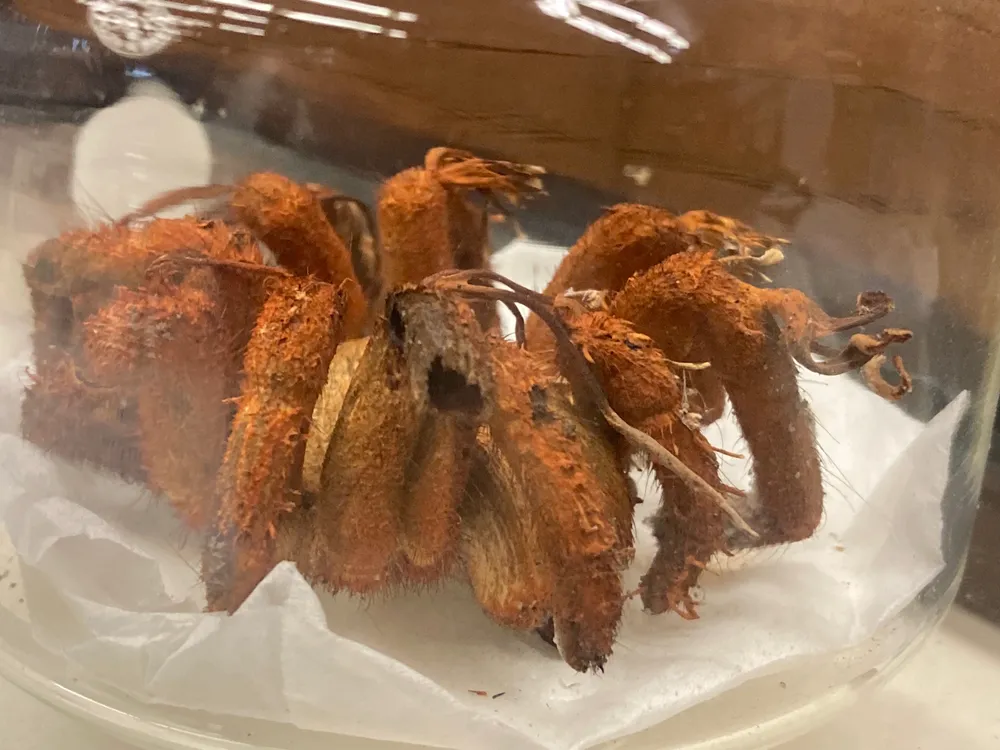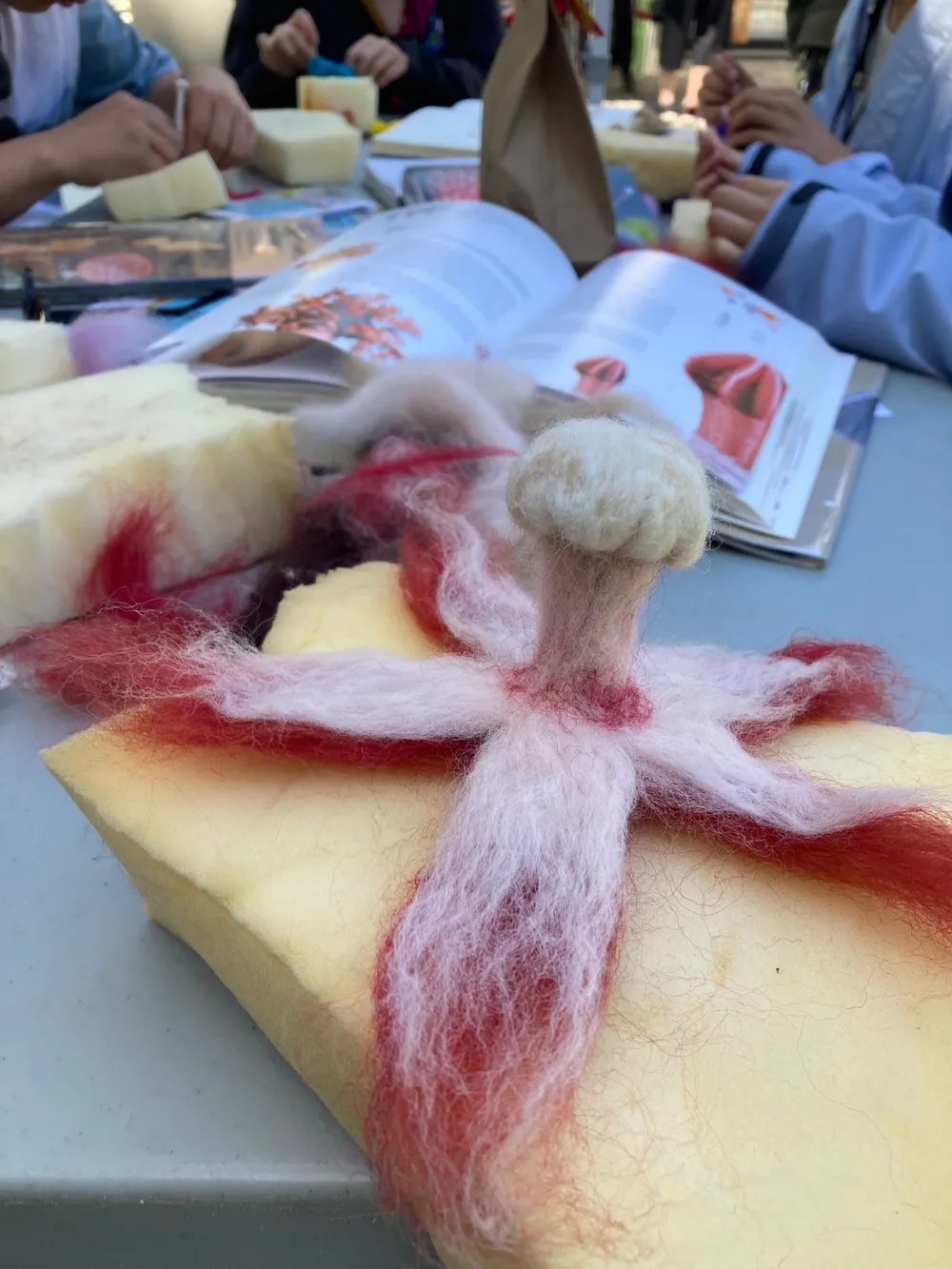Mycology is the study of fungi, the enigmatic branch on the tree of life that produces the mushrooms that pop up around campus in the spring and fall. Vancouver’s vibrant mushroom-loving community was happy to share its knowledge at the Vancouver Mycological Society’s Spring Mushroom Show on June 4 at the VanDusen Botanical Gardens.
The Vancouver Mycological Society (VMS) is a club for mushroom appreciators that meets monthly. The VMS puts on an annual Fall Mushroom Show which draws enthusiasts from all over the Lower Mainland, and last fall's success prompted the VMS to pilot a Spring Mushroom Show this year.
The shows host mushroom-related vendors and presentations by prominent mycologists. This time around, keynote speakers included author J. Duane Sept, local mycological legend Paul Kroeger, and Dr. Ludovic Le Renard, a postdoctoral fellow at UBC in the Berbee Lab. Attendees are also encouraged to bring mushrooms they’ve found to be identified by experts.
“There are a lot of facets to it, actually,” said VMS President Aril Yeo, who is also a UBC Forestry student. “I like to think that at VMS we have something for everyone.”
Climate change impacts fungal fruiting
In the centre of the Floral Hall, mushroom specimens brought in by members and the public showcased the diversity of local fungi. These specimens provide an excellent way for VMS members to share their knowledge about the mushrooms found around BC.
While many kinds of mushrooms were on display, the organisers noted that due to the lack of rain, the focus of the Spring Mushroom Show was more on the mushroom booths than the mushrooms themselves.
As many mushroom-producing fungi rely on plants around them for energy, droughts and heat stress caused by climate change can negatively impact BC fungi’s ability to gather nutrients and energy. Without these things, some fungi don’t reproduce. This interrupts the fungus’ lifecycle, meaning we don’t see as many mushrooms come fruiting season — or the fruiting season itself can change, as one 2008 study in Norway found.
During his presentation, Le Renard discussed the intricacies of fungal lifecycles.
“We only see [mushrooms] when they’re important… when [the fungus] is reproducing,” said Le Renard. The rest of the time, the fungus lives inside a substrate it feeds on, like soil or wood, growing and gathering energy throughout the year.
Le Renard highlighted the complicated nature of fungal reproduction. Many fungi go through multiple life stages, and even closely related fungi can have very different lifecycles.
One thing Le Renard pointed out unified all lifecycles, though, was that they all go through the same processes of fertilisation (the joining of two cells to create a new cell with twice the amount of DNA as the cells that formed it) and meiosis (a type of cell division that results in four new cells with half the amount of DNA as the cell that produced them). Both of these steps create the genetic diversity needed for evolution.
Spawning community from single spores
The VMS’s shows also showcase Vancouver’s flourishing mycological subculture.
“The Pacific Northwest is probably one of the biggest, [most] diverse mushroom cultures in the world," said Rhett Meyers, a member of VMS’s Event Committee and founder of local company Medella Mushrooms.
The event boasted an impressive collection of books and printed resources on local mushrooms and lots of VMS merch. Booths run by local foragers and big companies alike sold foraged and farmed mushroom products, like whole and dried mushrooms, tinctures and fruiting kits for growing mushrooms at home.
“That’s what’s really most important,” said Meyers, “getting the smaller people and the bigger [companies] … side-by-side.”
Local artists sold beeswax candles, stickers and yarn dyed with mushrooms. A table outside served samples of cooked oyster and morel mushrooms.
Another offered attendees the chance to create their own mushroom out of felt. They used long needles to poke coloured wool into the shapes of turkey tails and amanitas, then placed them on a map of the neighbourhood to show where each variety had been seen — a cross between craft show-and-tell and citizen science project.
“It’s a great community of like-minded people who are all kind of looking into the same thing,” said Meyers.
Have no fear, the fungi are here
Many people are distrustful of wild mushrooms because they aren’t sure if they are safe. Many English-descendant cultures (including settler-colonial North America) carry what some anthropologists consider to be a cultural bias against mushrooms, called "mycophobia," that consider them inherently toxic, dirty or unknowable.
However, BC is home to many species of culturally, economically and ecologically important edible mushrooms. Come fruiting season, you can find chanterelles, morels, lion’s mane, lobster mushrooms, and many more popping up at local farmer's markets.
Many BC Indigenous communities, including the Nlaka’pamux, have long histories with mushroom varieties such as pine mushrooms — and some First Nations, including Líl̓wat, continue to fight for sovereignty over the right to harvest mushrooms on their lands.
When asked what the public should know about mushrooms, Yeo, Meyers, and Le Renard all agreed mushrooms shouldn’t be seen as scary.
“You can touch them and it will be okay,” said Yeo. “A lot of people think that you need gloves or you’ll die if you touch a mushroom, but it’s okay, just wash your hands.”
“Don’t freak out; they are everywhere,” said Le Renard.
Share this article
First online









